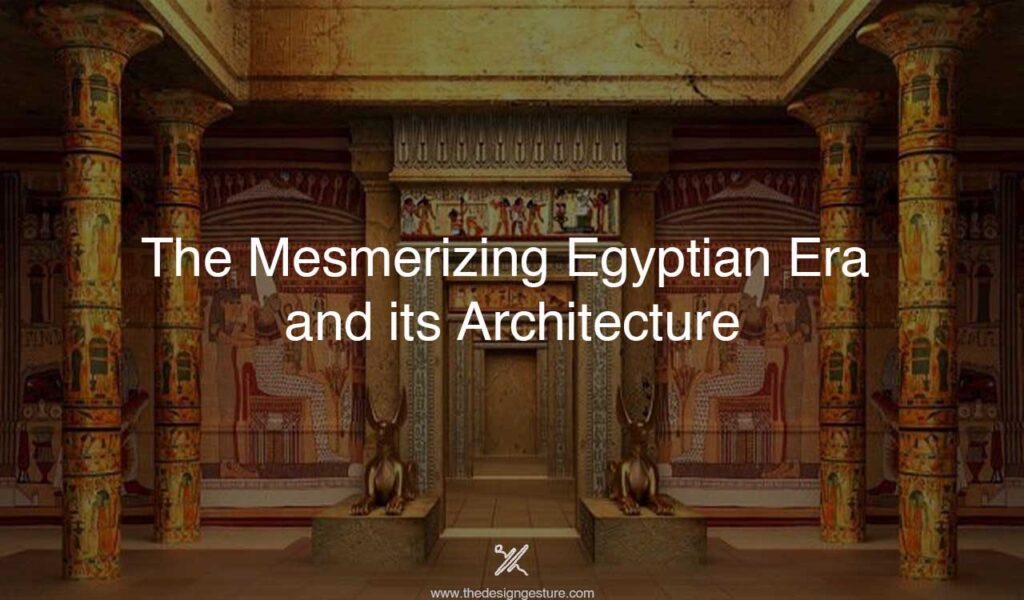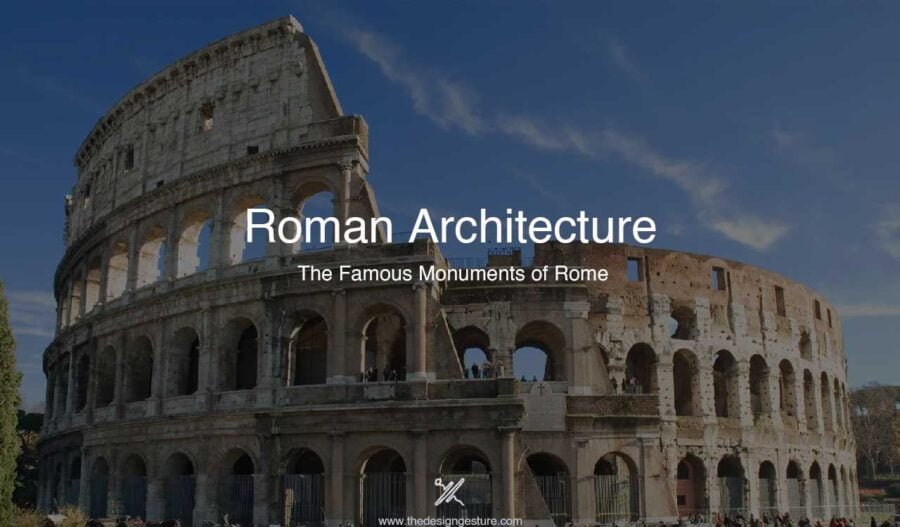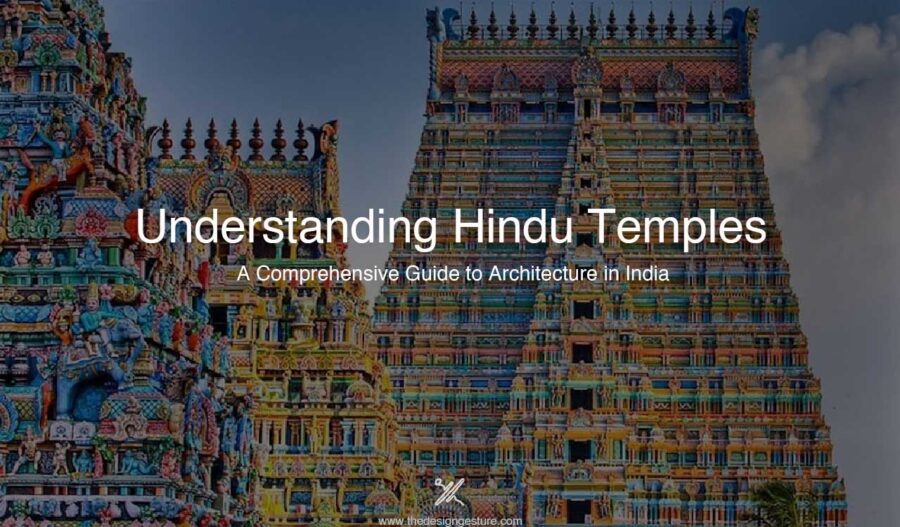“The Egyptian contribution to architecture was more concerned with remembering the dead rather than the living.”
-Stephen Gardener
Table of Contents
Introduction
Egyptian architecture, the greatest of all time which focused on the dead, had a permanent imprint on the manuscripts of Egypt. Some interesting facts, tales, verdicts and chanting of the realm to bow down to their pharaohs are still heard when we listen to the echo of “Egyptian Architecture”, hold on to your verbal diarrhoea until I deliver the complete story of Egyptian architecture from how it began to its infinity line prevalence.
The story won’t begin, unlike the old phrase of “once upon a time” instead it will be like……
History Of Egyptian Architecture
A long time ago there was a country famous for its belief in an afterlife, for them, the pharaoh, king or first person of society was equivalent to God, their settlement was largely influenced, affected and dependent on the nature of the river Nile and is marked on the world map because of proudly holding one of the seven wonders of the world in its boundaries, any guesses? oh! So obviously it’s Egypt.
Any place, country or settlement grows gradually with time and following the situations arising be it climatical, ecological or financial, henceforth happened with this pharaoh’s land.
Exploring the Egyptian saga of architecture, hereby delivering you the hierography of ancient, middle and new Egypt.
The Old Kingdom (2686 BC – 2181 BC)
There was a time when the settlement was near the Nile, found to be the longest river in the world until the Amazon River was measured, bringing in hopes of fertile crops with sorrows of floods destroying the settlement near its shore, affecting livelihood.
The flood water took along with it the kutcha houses made of papyrus reeds and mud, the disruptions forced them to give thought to an alternate option to build homes and what they found was not surprising rather a copy-paste idea of the most balanced and well-planned “Indus Valley Civilisation” or “Harappan Civilization”.
The procedure was the same, bricks were moulded, given a desired rectangular shape long in length with matching width and height, and laid in the hot sun so that the sun consumes the water in it and makes it a sturdy, rough & tough piece so that nobody could harm their livelihood which is enclosed in the conjunction of the bond between thousands of similar bricks.
But, they were still not happy as, Egypt an African continent country, acquiring the northern part of it is dominated by desert heading with a hot climate on major months and fewer days of mild winter causing an issue again for native Egyptians to reside in a house with fewer openings of doors and windows so as prevention to direct sun retention, and a habit to sleep on their built flat roofs due to fairly small size of houses, a bad idea!
Here comes the climax of the story, Egyptians believed in an eternal afterlife hence the houses in which they lived being alive can be a compromise but where the pharaoh or first person of society’s mummy is going to be laid should be vast and permanent over the years & decades, such an irony!
They were not afraid of their survival but rather were afraid of grave robbers and climatic damage made to the mummy – an eternal afterlife believer could be offended, but protecting a dead body is something weird and stubborn, a matter of timeless discussion, will do on some other day.
Pyramids & Their Architecture
Never, ever thought so about the idea that Egyptians came upon with of preserving the mummy, they created a structure called a burial chamber inside Mastabas, the central and deepest in-depth zone of the Pyramid.
Every pharaoh was clear with a mindset of developing pyramids but each one of them was created in its way in which some pyramids are conquering the world by their worth and some faced criticism – preaching to the next one.
But a significantly asked question should be answered here before discussing the varied pyramidal structure is why the pharaohs choose the only geometrical structure, the pyramid, among the 360 degrees of the geometry box each section consisting a different form, the answer is there was a father of pharaohs, the Ra, the sun god imaginarily they saw the sun to be seated upon the pyramid-shaped mound of the Earth which is emerged from the primordial sea and that’s why this pyramid shape is personified as the rays of their god i.e. the sun.
A perfect thought to prioritise their god and afterlife blending the mummy within the pyramid envisaging that their god itself is protecting the pharaoh’s mummy.
Pharaoh Djoser & His Pyramid
The king of the dynasty III named Djoser acquired the position of the pharaoh and was greatly influenced by his advisor, vizier and architect named Ar. Imhotep. He was the designer of Djoser’s tomb for his eternal afterlife, valuable glory & treasure to be preserved in.
The construction was like this, there were six mastabas, a square flat-topped structure consisting of a burial chamber for the pharaoh’s dead body, with decreasing in size placed one over the other creating a huge height of 200ft i.e., nearly 60 meters high.
But Imhotep missed the essence of the pyramid rather he created a step pyramid as there couldn’t be seen a clear line adjoining the two i.e., the joining vertex of each triangle straightway declining and connecting to the square base vertex.
“Every flaw is a beauty, it’s all about perspective.”
Now here is the fox entering into the story, being an architect, Imhotep smartly knew how to cover up the mistake done by him and gives a new religious and believable reason for the false construction of the pyramid as a result the step pyramid is now explained as to personify the climbing of pharaoh Djoser those steps to reach the god Ra, the sun.
Pharaoh Sneferu & His Pyramid
The pyramid built during Snefru’s dynasty is located in the royal necropolis city on the western bank of the Nile in the drain of sandy winds, the Dahshur, which is also famous for beholding the Bent pyramid, the Sneferu’s pyramid.
The speciality of this pyramid summarises in the statement “at least he tried to build a pyramid” or the efforts were visible, as it looked like a pyramid though not accurate but far better than Djoser’s pyramid or step pyramid.
Sneferu’s pyramid was bent at an angle of 55 degrees that’s the reason why the adjective bent is added as a prefix to the pyramid making it identifiable and recognizable. It is famously known as “The first real Pyramid”.
Pharaoh Khufu & His Pyramid
Khufu never knew that his mummy would embark on the world map, yes you are going in the right direction. His pyramid is “The Great Pyramid at Giza”. A motivational yet revolutionary thought came into Khufu’s mind, corrected his father Sneferu’s mistake and created the proper geometry of the pyramid.
The Great Pyramid at Giza of course has some distinguishing characteristics which allow it to imprint itself as one of the seven wonders of the world. Despite being 481ft tall accurately 480.6ft tall it was the first one to hold the title of tallest man-made structure in the world until the Eiffel Tower conquered it.
Let’s throw some spotlight on its material selection and architectural characteristics under the umbrella of Egyptians and their eternal afterlife.
Why Is It the Wonder?
This colossal pyramid inclined at an angle of 51degrees aligning the lines to match the four cardinal points has an outer layer of yellowish-toned limestone, which is brewed off with time, and now is the turn of beneath layer the inner layer which is lightly less yellowish than the older one, comprising of the main focal point, the burial chamber which is surrounded by the sturdy, beholding and toughest stone of all times, none other than granite.
This huge funerary edifice took two decades to reach its height and over 100,00 workers gathered each cell of it by irrigating it with hard work and unfiltered sweat.
Limestone used to build these structures has a reason behind it, the highly reflective nature of it gave it the title of “Glorious structure”, of course, if so many light-reflecting blocks actually 2.3milliion limestone blocks came together to enlighten the world with its reflecting ray and energy of the sun in it.
Pharaoh Khafre & His Pyramid
Egyptian empire reached its pinnacle by constructing one among the seven wonders and was enjoying its saga, continuing the legacy Khufu’s son built a pyramid which had a difference of 9.81ft, so by doing mathematics we got the height of Khafre’s pyramid i.e.,
470.79ft, yes, it’s the smaller one.
The highlight of Khafre’s pyramid was not the decrease in height but this time the Egyptians are being more metamorphic, sounds offensive? But it is so, what they did is, they created a sculpture i.e., a “non-living being” to safeguard the dead mummy.
This sculpture creation was new to Egyptians but they trusted the old material limestone to develop it. The creation of the sculpture was blended in a manner where the body of the lion and the head of the chief person of society, the pharaoh is adjoining safeguarding the Khafre’s mummy laid in the pyramid.
Naming was necessary and a very tough task as it was neither a human nor an animal rather a combination of two so around 1400 BC they named it “The Great Sphinx” specifying Ra Horakhty, a form of their god the sun hyperbolically an incarnation of god protecting temple doors as similar to Nandi in God Shiv’s temple or Hanuman in God Ram’s temple.
The creator of this Great Sphinx is a controversial topic as great deeds of the past usually have huge fan bases, and will always be found as vulnerable in the sector of their creator and the answer to the question of who created it will be dash___.
The Great Sphinx had lot many theories over its colour existence some say it used to be the primary colour until it had tanning or some say it was in a dull yellowish tone as being carved out from one huge piece of limestone which was left out in the quarry while constructed the pyramid, also the thing here to note down is the front paws of human-lion sculpture are in different pieces of limestone.
As soon as we will move ahead there is a lot many stuff in this Great Sphinx to giggle, debate and explore. One of them is the nose incident, yes, the sphinx does not have a nose but earlier it existed or maybe it never existed again not too sure because I don’t have one amongst those pharaohs so I can ask them and confirm with you all, sorry again!
Not only nose theories say there was some mischievous done with his head too which could be the reason for it being disproportionate.
Pharaoh Menkaure & His Pyramid
This pharaoh created that pyramid which complete the set of three siblings standing upright and altogether, the 3 pyramids at Giza. This pyramid of pharaoh Menkaure is one-tenth the size of Khufu’s pyramid i.e., the smallest of three.
These three pyramids were the highlight, drama and rejoicing factor of the architectural saga of Egypt, hereafter this period the technique and construction of pyramids were not at tight grip rather the rope tends to slip from the hands of coming rulers and pharaohs, the reason behind is “it’s all about time”.
The Middle Kingdom (1975 BC – 1640 BC)
This is the age when they remembered the remarkable work of their ancestors, but couldn’t efficiently learn and redo it, also time and materialistic factors changed as geography changed.
The Black Pyramid
This age was more of a game changer since the practice of pyramid construction continued but one among all was sustained i.e. of pharaoh Amenemhat III famously known as the “Black pyramid”.
Why did this pyramid hit so hard in the history of Egypt? It is because while doing its construction the basic principles were hindered which in turn made it unsuccessful in survival and recognition.
The flaws were this pyramid, unlike others, rested on a stable base this pyramid wobbling on an unstable one, it was very near and clear to the river Nile merely 30ft above sea level which was flooded by the Nile immediately after its completion.
“An architectural masterpiece can have a design flaw as stated its ‘the perspective’ but shall never-ever compromise with its structure.”
The core of this pyramid was weakened due to the array of chambers and corridors and the ceiling was not made to relieve the stress of the masonry above it, a complete blunder in basics.
The flaws in construction were shouted aloud and they didn’t wait for the entire completion of the structure rather the ceiling sunk by two inches and menacing cracks were developed, door frames had begun to buckle. Pharaoh Amenemhat III was worried for his mummy, the pyramid being so rickety frightened him to protect his mummy at this pyramid at Dashur rather he constructed another one in Hawara which is taking care of his mummy to date.
Pyramid of Serositis III
Another example of the resurrection belief of Egyptians is the pyramid of Serositis III located near Sneferu’s pyramid at Dahshur.
Unlike Black Pyramid, it also had drawbacks in its construction, the structure was built upon desert gravel making it unstable to survive for years. The inner core was not the core it lacked the mortar in between which couldn’t hold the bricks together.
Apart from flaws in material selection and construction the earlier ethics and principle of direction following Egyptian vastu the entrance of the pyramid was meant to be in the north but was manipulated to the west.
Pyramids have been losing their hold on the Egyptian empire, since then the pyramid development started till the death of their construction methodology enormous pyramids were built, some became wonders and some were blunders, yet recognised Egypt as the “nation of pyramids”.
“From the height of these pyramids, forty centuries look down to us.”
The prodigy of the pyramids are sung in rhythms of world architecture but their decline was obvious when Egyptians lost the foundation of their construction or rather an appeal of changing time.
As time succeeded their belief in the afterlife was overpowered by their belief in God, they started building temples, performing rituals and a hope through worship that this god will save Egypt from chaos.
The New Kingdom (1520-1075 BC)
The new age of thoughts and culture took over the old gigantic construction of pyramids and the eternal afterlife.
Temples started their Egyptian form of architecture to retain their culture and heritage till infinity and make them as big as pyramids are these days, not in size but rather in popularity.
Temples and pyramids all were developed when people had an interest in the initial purpose i.e. earlier belief in the afterlife-built pyramids and now in this new age of Egypt, the god was the main highlight and the deity was worshipped for good health and wealth.
The temples listed below are the new Egypt architectural masterpieces, have a look at them!
Amun-Re, Karnak
The temple where God Amun directly interact with the people of Earth. Architecturally, the main temple of Amun-Re had two axes—one that went north/south and the other that extended east/west. The southern axis continued towards the temple of Luxor and was connected by an avenue of ram-headed sphinxes. The hypostyle hall was its key feature, a huge hall with a roof supported by several columns.
Temple of Hatshepsut
This temple is the emblem of feminism built in the new kingdom of the Egyptian empire, powerfully holding the tag pharaoh Hatshepsut.
Empowered women, conquering the world with her work and respect toward Egypt as an award of appraisal the Egyptians secure her legacy by embarking on the architectural structure of her ruling time like the temple of Dier-el-Bahri, where her mummy was laid later on architectural recognition as several floors of the column in front.
Many such temples added to Egyptian Architecture are The Ransom Temple, Luxor Temple and Abu Simbel.
Characteristics & Columns of Egyptian Architecture
Egyptian history is a huge canopy protecting its heritage, whether it’s for Great Pyramids at Giza or the construction of various temples it had all drama, fantasy, entertainment etc. which I believe every cultural history of an area is having, undistinguished the architecture different, as it is Egyptian!
Here are some identifiable features of Egyptian architecture that justify the suffix added as Egypt.
Here is the chief architectural element acquiring the first position for identification is the Egyptian Columns, monolithic art pieces are incredible in the way they adorn art, which later was made from different blocks, adjoined together by matching the line of differentiation with paint to give a seamless look.
The material used to build these long, erect and carved pieces were sandstone, limestone, and granite and the unique idea of using stone discs one above the other to reach the height was quite explanatory yet practical.
Egyptian architects are way smarter in using geometry, how easily they dissolved pyramids in their country just like sugar dissolving in water and in the same manner they did it for this standalone structure whose base could be varying from 16 sides polygon to a complete circle they all had it.
Varied Columns
They were majority sorted earlier they went with geometric shapes, pyramid and now they did the fusion of carving inspired by i.e., plants blending with the cylindrical geometry called columns.
Fluted Columns, the earliest form of column depicted the bundled reeds or plant stems and polygonal shafts as well.
Lotiform Columns, a feature of non-secular buildings and name suggesting the shape to be inspired by the lotus, to be precise lotus bud. Acquired their presence to date and were in the trend of construction during old and middle kingdom temples where the ribbed shaft of the column are lotus stem and capital in the form of a lotus bud.
Palmiform Columns, found on the inner side of the court, can identify and point out as it looks like a palm tree motif where the eight palm fronts would be lashing to the pole.
Papyriform Columns, the one which couldn’t be a standalone structure, and capital have two identifications as motif varies between close bud or bell-shaped.
More types of columns like Coniform, Tent Pole, Composite and Campiform columns were also built but was not too magnificent to discuss.
Hence the Egyptian saga of architecture was mainly surrounded by the pyramids and their decorative, carved columns preserving the mummy and showcasing their heritage respectively.
Egyptian Architecture Influencing Present-Day Architecture
A commingling of ancient time architecture with present modern dates of architecture is as interesting as blending sweet and sour tastes in a dish on your platter, decide by yourself which is sweet and which one is sour.
So, going in architecturally if you found a sphinx-like structure or you see the pyramidal structure of any building, you got caught it, of course, an inspiration of old times reluctantly seen in the modern world times.
For interiors a prominent theme, Art Deco took elements from Egyptian Architecture from the carving prints on carpets to geometric floor patterns.
Egyptian art enters modern homes through various mediums. Ancient designs on papyrus, a form of paper used for art in ancient Egypt, are found on walls of homes, offices and state buildings, and sculptures of marble obelisks and pyramids are sold as accent pieces or furniture in homes and offices.
Paintings of Egyptian life or geometric shapes are displayed in art galleries and stores. And the Egyptian eye makeup design has become the smoky eye of today.




